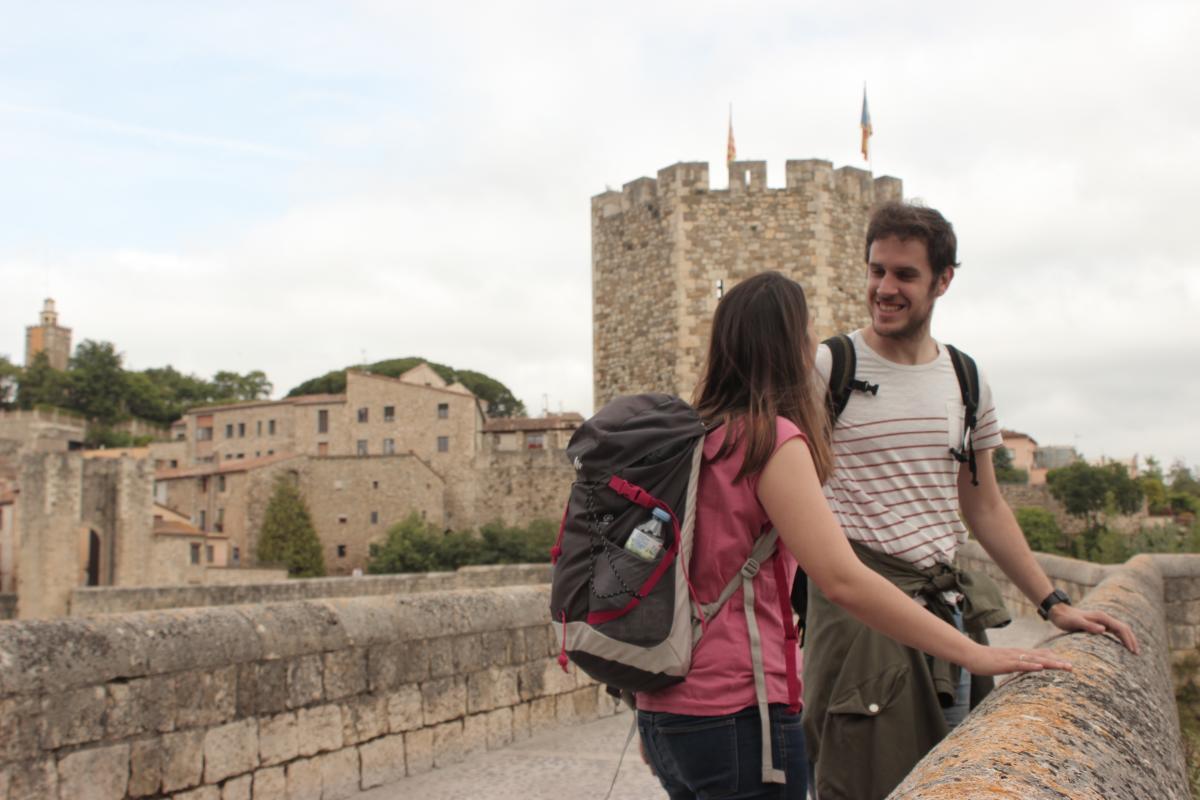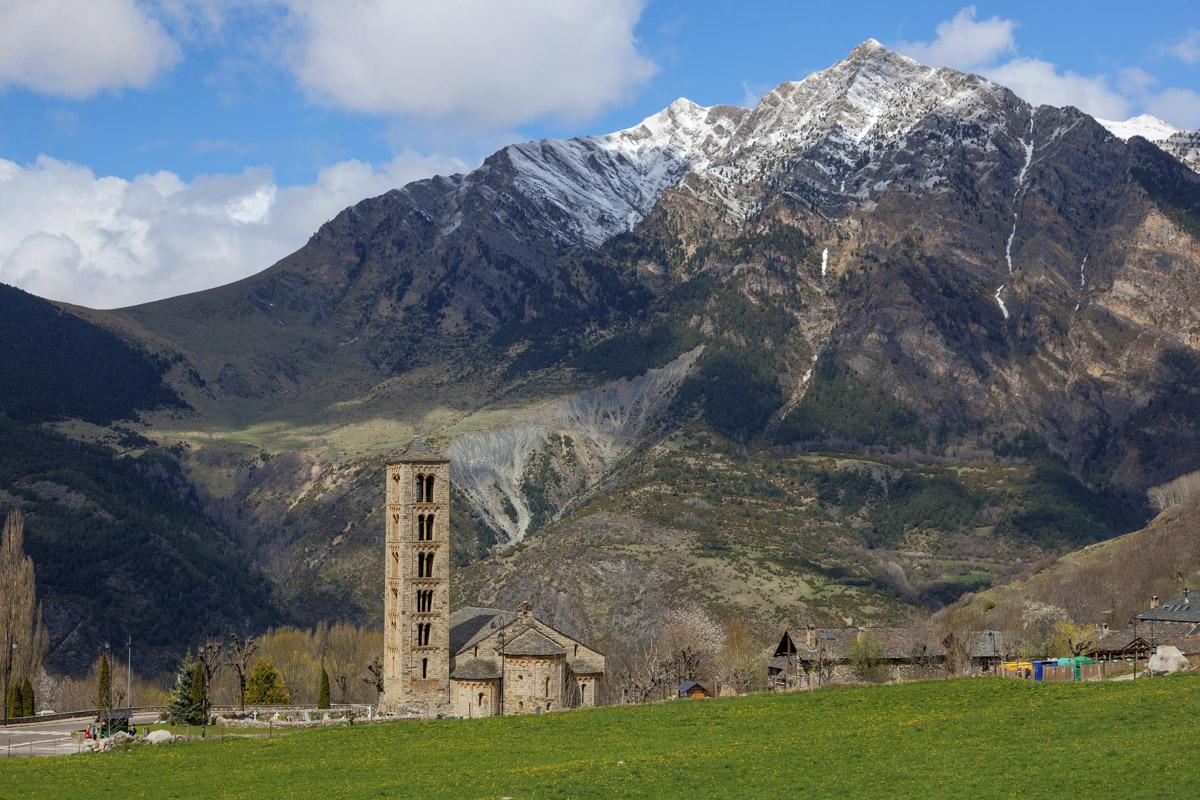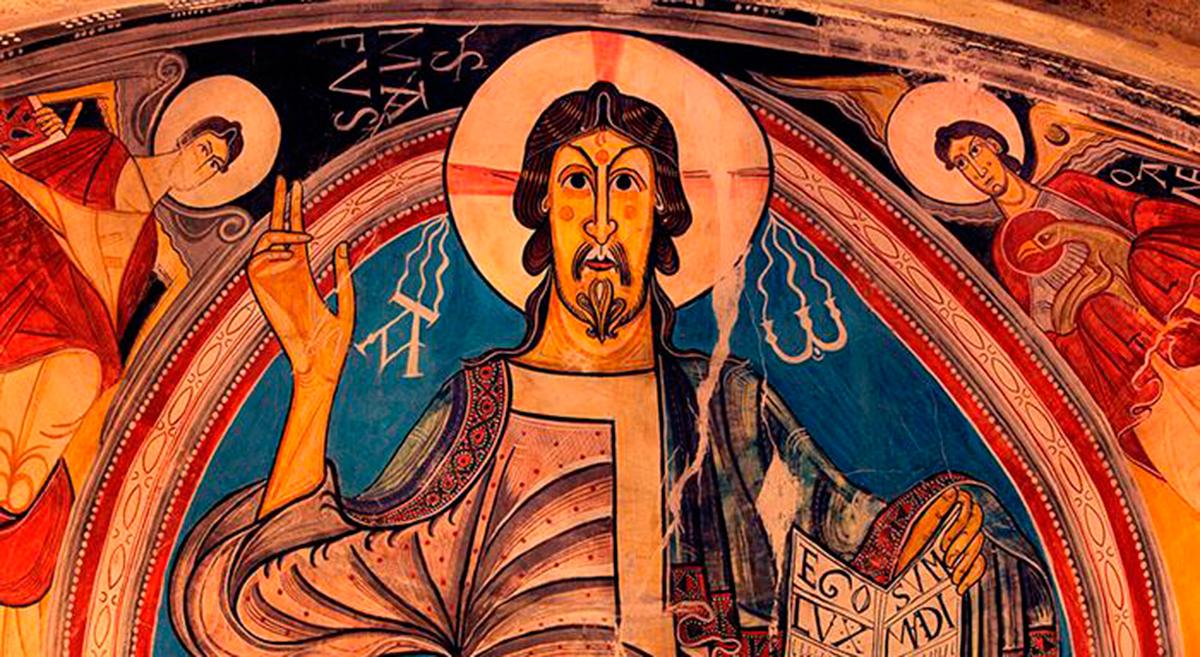This cultural route starts at the monastery of Sant Pere de Rodes, located high above the sea at the end of a steep, windy road offering spectacular vistas. The rocky landscape of Cap de Creus, the whitewashed houses of the seaside towns, the large bays of Roses and El Port de la Selva, and the immensity of the Mediterranean spread out below this privileged place, considered one of the best viewpoints along the Catalan coast. At the end of the road, pause for a while to admire the surroundings. To the left looking towards the sea is the hermitage of Santa Helena de Rodes; to the right, the huge monastery of Sant Pere de Rodes; and on the highest part of the mountain range, the castle of Sant Salvador. The first stop is the pre-Romanesque hermitage, crowned with a bell gable. Then visit the monastery, the jewel of Romanesque architecture in Catalonia, with a unique atmosphere in each of its various spaces: the church, the bell tower, the two cloisters, the crypt, the wine cellar, the monks’ cells, and other monastic outhouses. After that, a 25-minute walk brings you to the castle of Sant Salvador, a ruined fortress dating from the 11th-13th centuries, located in a place commanding some of the best views in the country.

Leave Sant Pere de Rodes and head for Besalú, one of the most impressive medieval ensembles in Catalonia. The fortified bridge, with its silhouette reflected in the waters of the River Fluvià, welcomes visitors to the town. The time to arrive is late afternoon; when the twilight sky is bathed in shades of gold and blue, the floodlights are being turned on to illuminate the bridge, and small street lamps light up the medieval town centre. Just after the tourists have departed is the best moment to discover the most romantic and attractive aspect of Besalú. From a distance, the town is spectacular and very photo-friendly; it is interesting to stroll through the old streets and squares and visit the most representative sites, such as the monastery of Sant Pere and the Plaça dels Jueus with its mikveh (Jewish purification baths), one of the two discovered to date in the Iberian Peninsula. Bear in mind that you are now in one of the main Jewish quarters of medieval Catalonia. When you visit the mikveh, a local guide will explain all about the baths where Jewish women used to follow the ancient Hebraic ritual of total immersion after menstruation.

You will need a whole day to complete the Land of Counts and Abbots route running through the Eastern part of the Catalan Pyrenees, where you will learn about some of the best-known episodes in the history of Catalonia and explore a fascinating world of myths and legends. In the village of Gombrèn, drop in to the Museum of Count Arnau and Mataplana Castle to find out about one of the most popular legendary characters in the country. The sanctuary of Montgrony is a spectacular Romanesque ensemble from where you can follow a path leading to Sant Ou cave, allegedly used by Count Arnau to conduct a romance with the abbess of the nearby convent of Sant Joan de les Abadesses. In Ripoll, you can take a guided tour of the monastery of Santa Maria and learn all about the adventures of Count Guifré el Pilós and Abbot Oliva, the secrets of the magnificent 12th-century portal, one of the most important Romanesque features in the world, and the outstanding sculpted capitals in the cloister. The last stop is the convent of Sant Joan de les Abadesses, a harmonious architectural ensemble located in the centre of the town. The nearby Abbot’s Palace (part of the ensemble) houses the Interpretation Centre of the Myth of Count Arnau, where an interactive exhibition illustrates Catalan folklore, music, literature, and history as well as the exploits of the fearless medieval count.
Continuing the route westwards, stop off in Bellver de Cerdanya to admire the beautiful Romanesque church of Santa Maria de Talló, and in La Seu d’Urgell to visit the Romanesque cathedral, the only one of its kind in the Catalan Pyrenees, with its superb cloister, church and diocesan museum. While you are there, take the opportunity to walk around the centre of the town and buy some of the renowned artisan cheeses and cured sausages in the local market.

It is important to bear in mind that these are borderlands, where many castles, defence towers, and lookout towers were built around the tenth century for reasons of security. Itineraries such as the Border Castles route in Pallars Jussà County, with its emblematic Mur Castle, are a good way to discover the history of this area.
More natural and heritage wonders await you in Vall de Boí, a destination that has become a “must” for lovers of Romanesque art and architecture from all over the world. The valley is the site of nine Romanesque churches and hermitages, built in the 11th and 12th centuries in the Lombard Romanesque style from northern Italy, and conserved intact due to their geographical remoteness, and now listed as a UNESCO World Heritage Site.
The itinerary begins in the Romanesque Centre in the tiny village of Erill la Vall, where visitors can learn about the heritage ensemble in this impressive territory. From there, go around and admire the churches of Barruera, Cardet, Cóll, Durro, Erill la Vall, Boí and Taüll. All the sites are captivating, but especially so the church of Sant Climent de Taüll, where modern technology makes the mural painting of Christ Pantocrator come to life before our eyes.
A spectacular projection mapping makes it possible to see in situ the murals now conserved in the Museu Nacional d’Art de Catalunya (MNAC) together with those remaining in the church, as well as a reproduction of the pictorial ensemble as it must have appeared in 1123, when the church was consecrated.

The last stop on this journey through the medieval history of the Catalan Pyrenees is Val d’Aran County. Here we find an impressive monumental ensemble largely made up of small Romanesque churches, where the architectural style is enhanced by a rustic but expressive sculptural ornamentation. Visiting each village and corresponding Romanesque church is an ideal way to immerse yourself in Val d’Aran and learn about its landscapes, customs, traditions and language, and its rich medieval heritage.
